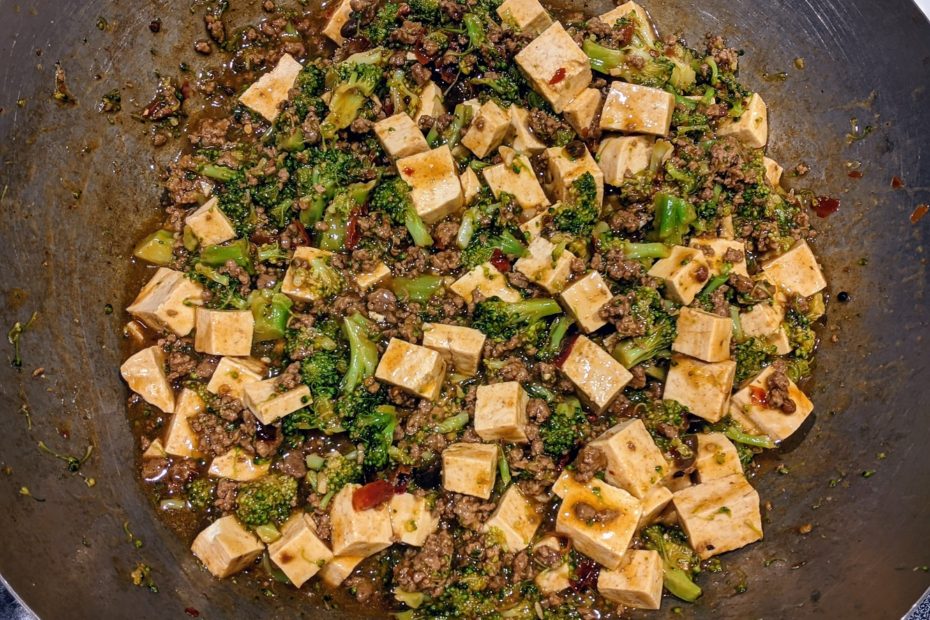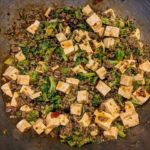Mapo Tofu was one of my favorite dishes while traveling through China in my early twenties. It’s a delicious mix of salt, spice, and savory. Unfortunately, it can be difficult to find good Mapo Tofu in the US unless you have an authentic Chinese restaurant nearby. Thankfully, it’s really easy to make if you’re willing to buy all of the necessary ingredients.
Bonus – it’s super flexible. Sure, the traditional version is nothing more than tofu, beef, and sauce. But who cares? If you’re making it, you can alter it to your tastes and preferences. You can add extra vegetables or make it vegetarian or alter the flavors as you wish.
Craving Chinese food? Don’t want to go out or risk eating a ton of terrible ingredients? If so, give this a shot.
NOTE: This recipe was adapted from Fuschia Dunlop’s beautiful cookbook The Food of Sichuan. If you’re interested in making more foods from Sichuan, China, I highly recommend her book. It’s amazing.
Jump to RecipeMaking Mapo Tofu
Ingredients for Mapo Tofu
Mapo Tofu is incredibly easy to make. The most difficult part is collecting the ingredients. What’s even worse, a lot of the common versions of these ingredients are incredibly unhealthy.
Doubanjiang: The most difficult thing to find is doubanjiang. I can’t find a good version in Salt Lake City, so I buy it online. This option is good quality and very affordable. If you want an upgrade, the doubanjiang from Fly By Jing is fantastic, but it’s more expensive and often unavailable.
Sichuan Peppercorns: It can also be difficult to find Sichuan peppercorns. There are a few different colors, the most common being green and pink. I personally like to use a bit of both. The pink is a little more floral and the green has a little more bite. Here’s a good, affordable version that will last you a while.
Black Vinegar: The last thing that can be tough to find is black vinegar. If you can find this locally, I highly recommend it. All of the versions online are overpriced. That said, this one is decent quality and affordable. It’s also completely unnecessary to make a good Mapo Tofu. If I couldn’t find it locally, I would just skip it.
Cooking with a Wok
If you’ve never cooked with a wok, it can be a little different than cooking with other equipment. Once you actually start cooking, it should be pretty quick. You should keep the heat very high, stir regularly, and watch it fairly constantly.
If you don’t have a wok, you could make this in any large, heavy pot. The technique might change a little bit, but you’ll still end up with great food.
If you are using a wok, I recommend you prepare everything before you start cooking. Once you drop the food into the wok, things are going to move pretty quickly. I’ll usually prep things while I cook, but when I cook with a wok, I always do all the prep-work before I start cooking.
If you’re cooking with someone else, they can do some of the prep while you tend the wok. If you’re cooking alone, you should probably do the prep-work first.
Flavor Mixture for Mapo Tofu
The flavor mixture for Mapo Tofu is fairly simple to put together. If you have the doubanjiang and the peppercorns, it’s incredibly simple. It takes about 5 minutes to get everything into one bowl.
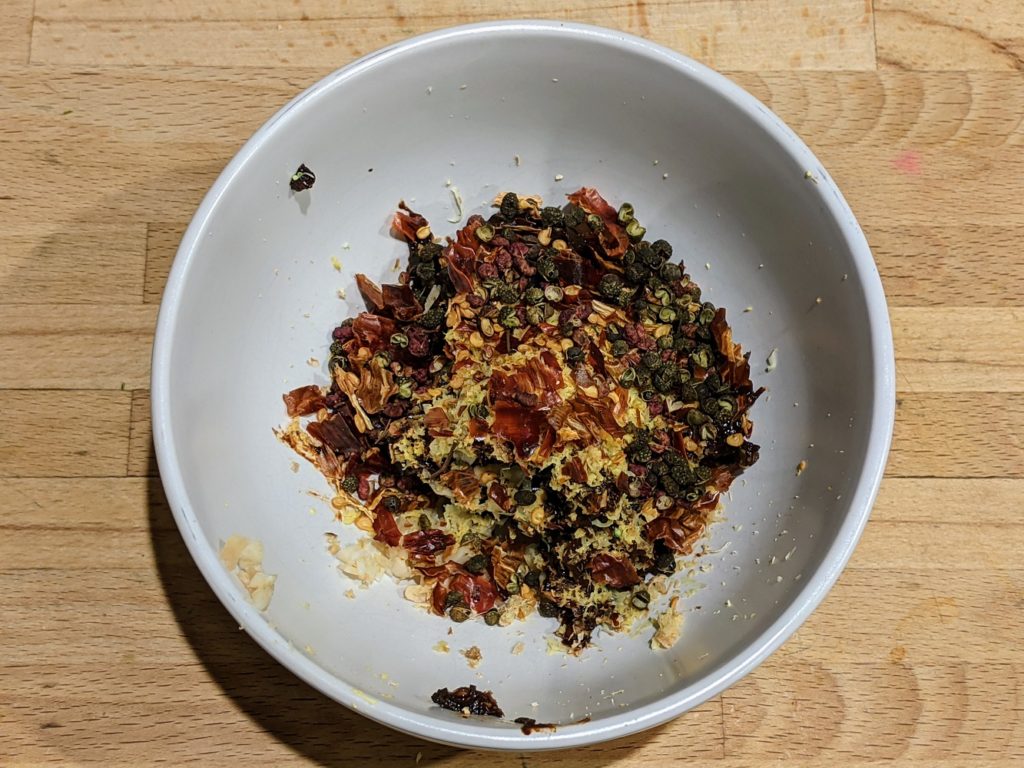
Once you make the flavor mixture, tear the broccoli, and slice the tofu, it’s time to start cooking.
Cooking the Food
Start by getting the wok as hot as possible. Most restaurants that use a wok have a dedicated fire ring. This will get the wok to a couple thousand degrees. You have no chance of getting your wok that hot in most home kitchens. So put the wok on your biggest burner, turn it to high, and let it get hot.
Once the wok just starts to smoke, pour 2 tablespoons of oil down the side of the wok. Then add the ground beef. Cook until it just starts to brown.
Then add the broccoli, stir, and place a lid on top.
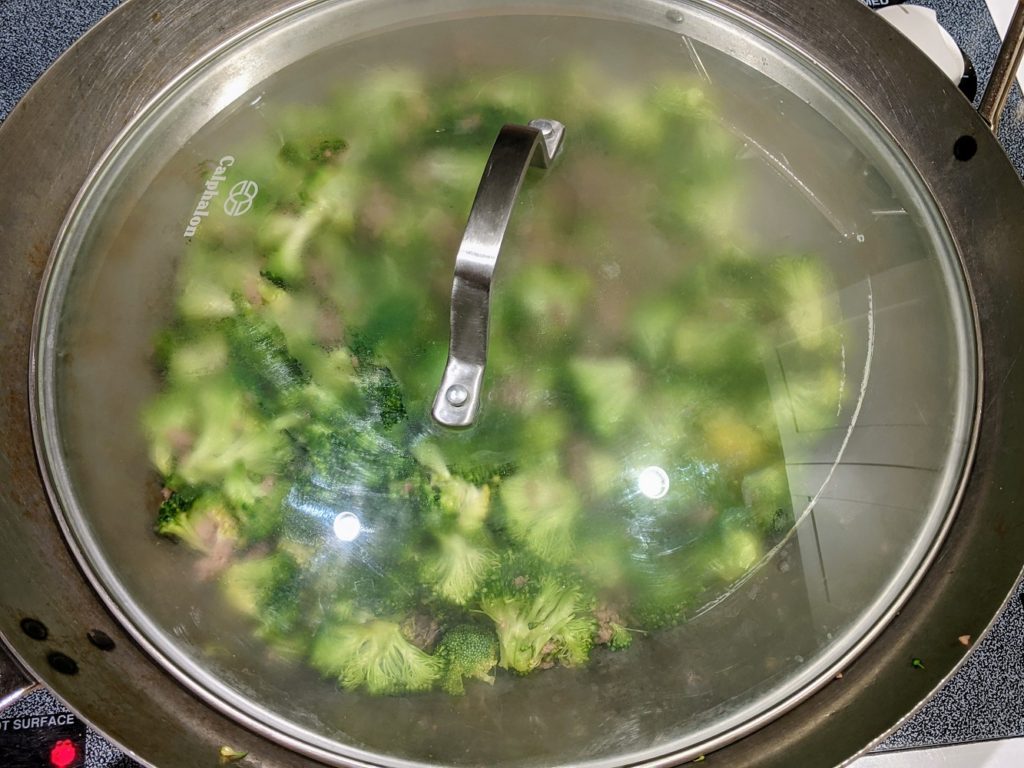
The lid doesn’t have to fit. It just has to cover the beef and the broccoli. Some woks come with a dedicated lid, but mine didn’t. You’re just trying to create steam.
Steam for about 5 minutes, until the broccoli starts to get soft. Stir every minute or two to make sure nothing sticks.
Once the broccoli starts to get soft, push everything up the sides of the wok. Create a huge hole in the center. Then add 3 tablespoons of avocado oil and the flavor mixture into the hole.
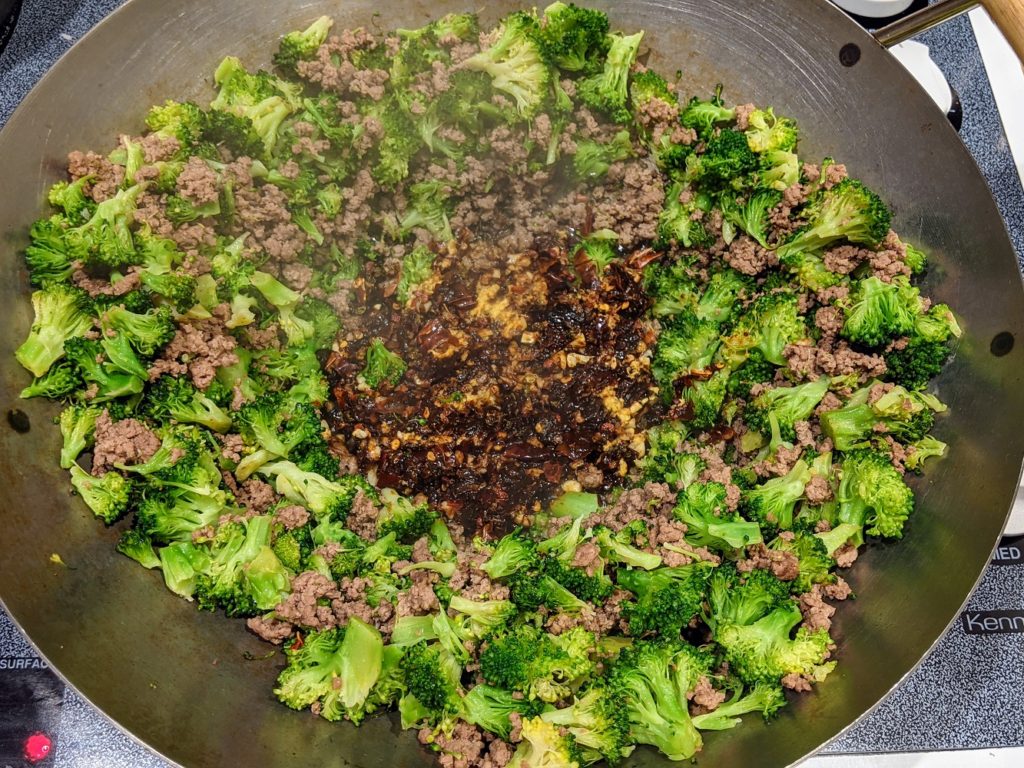
Cook the flavor mixture for about 1 minutes, stirring constantly and keeping the beef and broccoli on the sides of the wok. Then stir everything together.
Add about 3 cups of water or broth to the pot along with the sliced tofu and stir to combine. Let it sit for a minute or two until it starts to simmer, then add the starch mixture.
Stir to combine and then let it cook for another minute or two.
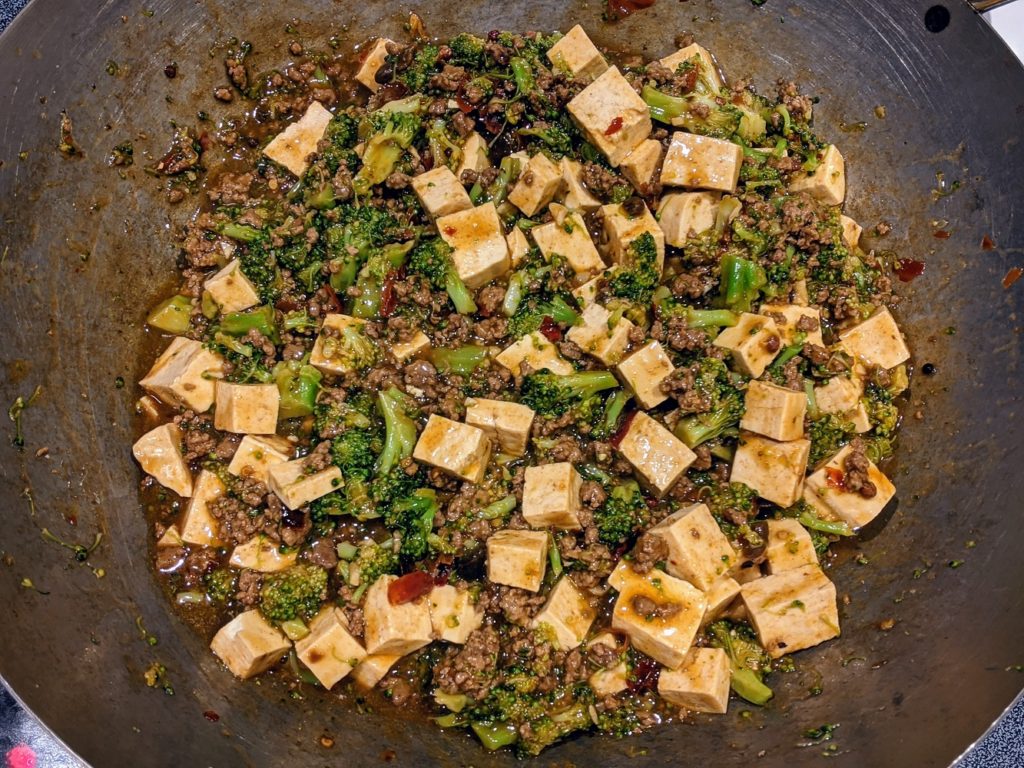
Once the sauce has thickened, you’re ready to eat.
Adjustments
This dish is pretty flexible.
For one, you can leave the broccoli out or replace it with another vegetable.
You can also replace the beef with ground pork. Beef is more traditional, but pork is much more common these days. I opt for the beef, partially out of tradition, but mostly in favor of better health. It’s much easier to find regeneratively-raised beef than it is to find regeneratively-raised pork. So I typically choose beef.
You could also go the vegetarian route. If you go that direction, I recommend replacing the beef with 1-2 pounds of chopped mushrooms. Then cook them for a little longer in the first step until they reduce and develop a nice, meaty texture.
Serving
My Mapo Tofu might be slightly non-traditional, but I serve it in the traditional way: over rice, topped with a pile of green onions and a splash of black vinegar.
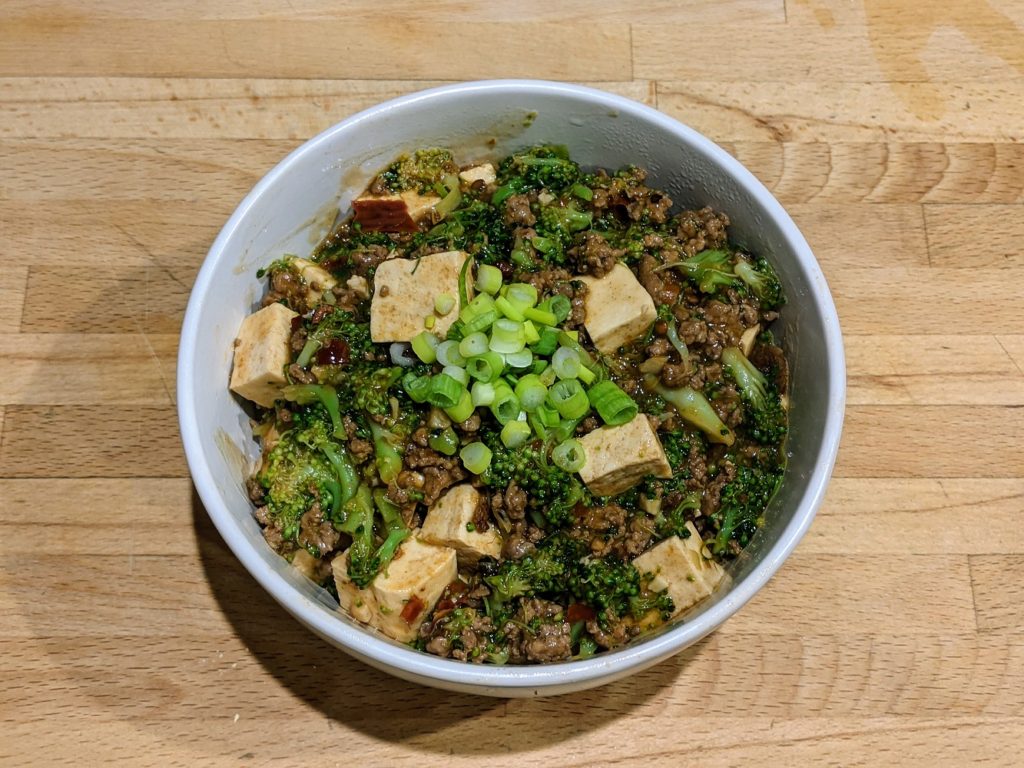
You could also serve it over quinoa, or eat it by itself. If you don’t have black vinegar, it’s not a big deal. I just like the acidic quality it provides. You could also use a splash of red wine vinegar or a squeeze of lime and get a similar effect.
Mapo Tofu
Ingredients
- 2 Tbsp avocado oil
- 1 lb ground beef preferably 85/15
- 1 lb broccoli torn into small pieces
- 3 Tbsp avocado oil
- 1 lb organic tofu cut into small cubes
- 3 cups water or broth
Flavor Mixture
- 3 Tbsp doubanjiang *see note
- 3 cloves garlic minced
- 1 inch ginger finely grated
- 2 tsp Sichuan peppercorns **see note
- 2 dried chiles torn into small pieces, about 2 tsp
- 1 Tbsp soy sauce
Starch Mixture
- 2 Tbsp potato starch or tapioca, organic corn, etc.
- 4 Tbsp water cold
For Serving
- 4 cups cooked white rice
- 1 bunch green onions thinly sliced
- black vinegar (optional)
Instructions
- Start by making the flavor mixture, tearing the broccoli apart, and slicing the tofu. Then place a wok on the stove on high heat. Once it's hot, pour 2 tablespoons of avocado oil down the side of the wok. Add the ground beef to the wok and use a spatula to break the beef into small pieces. Cook for a couple minutes until the beef just starts to brown. Then add the broccoli, cover with a lid and cook for about 5 minutes until the broccoli starts to soften.
- Push the beef and broccoli to the sides of the wok, making a large hole in the center. Pour 3 tablespoons of avocado oil in the hole, add the flavor mixture, and cook for about a minute, stirring constantly to prevent sticking.
- Add 3 cups of water or broth and the sliced tofu to the pot and stir to combine. Bring back to a simmer, then add the starch/water mixture. Stir to combine and cook for another minute or two.
- Serve on top of rice, top with green onions and a splash of black vinegar.

